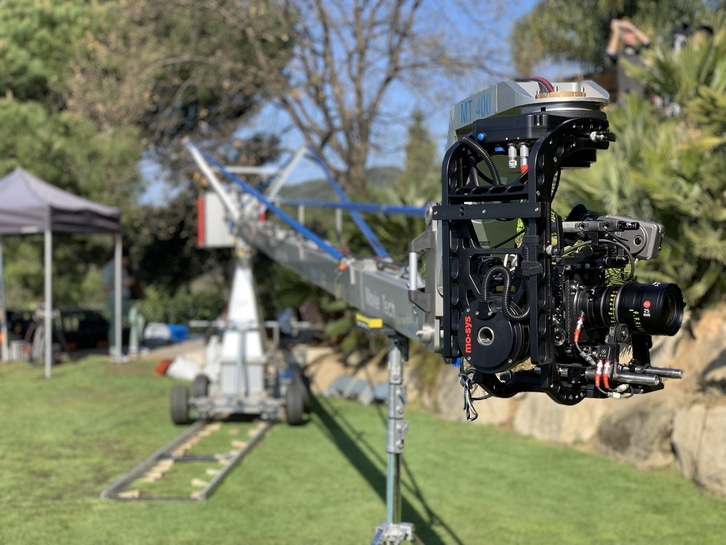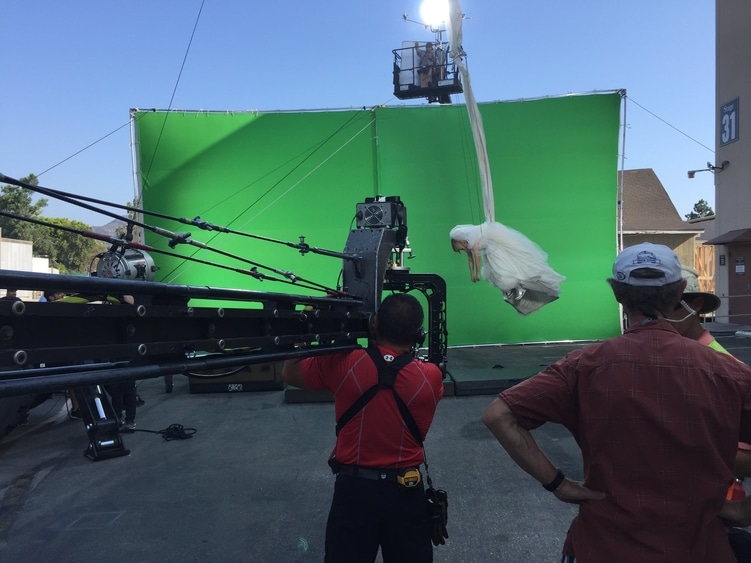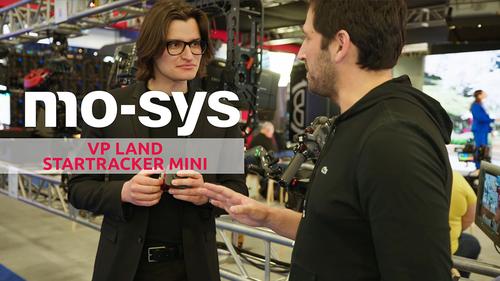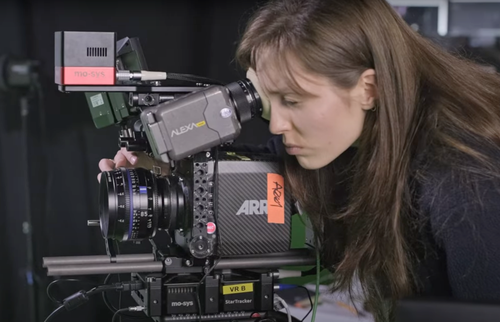The key features of camera crane remote heads
When crane shots first began to appear in cinema, they were the epitome of cinematic innovation. Early in their life cycle, crane shots were only utilised by some of cinema’s most highly praised directors, including the highly controversial Leni Riefenstahl, Orson Welles, Jean-Luc Godard and from the early films of D.W. Griffith.
Until the late 90s and early 2000s, camera operators would have to ‘ride’ camera cranes and manually operate the pan and tilt of the camera to get that perfect shot. All too often, this was a technically involved, time consuming and even potentially unsafe process. Today, almost all high-end productions have left manual cranes behind, choosing instead to use camera crane remote heads to achieve those sweeping shots.
But what is a camera crane remote head, and what are some of the main features of these camera crane heads? In this article, the Mo-Sys team look into the key features of camera crane heads and how they are used.
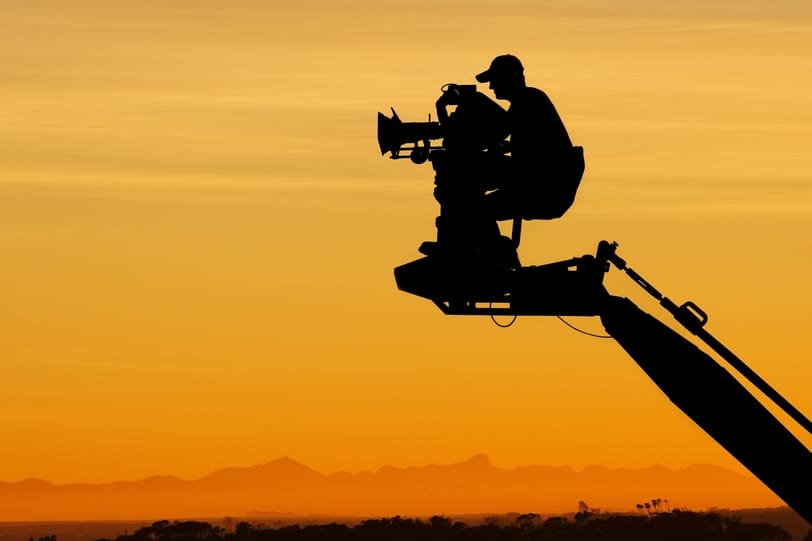
What is a remote head?
As we’ve already briefly touched on, remote camera crane heads mount a camera on the end of a camera crane. Thanks to innovative companies like MovieBird, Panther and SuperTechno, and Mo-Sys manual cranes have almost totally been replaced in both film and broadcast production. As such, it’s absolutely essential that they replicate the feeling of ‘riding’ the camera, giving camera operators the immediate feedback, they expect. Thus, the heads allow for the level of precision necessary to get the shots that are required.
Beyond being accurate and precise, remote heads also need to be robust and reliable. As an essential feature of almost any high-end production, the heads need to survive being swung around by a crane and any wear and tear that could occur while on set.
Gears, through-holes and inputs
The importance of backlash
Any camera operator knows that backlash is one of the most important considerations to keep in mind when shooting, especially when using a remote head. Using electronic slow starts can help to prevent backlash, but the delay caused by these features can affect the precision of the operator, making it difficult to get certain shots right.
More often than not, the level of backlash is determined by the gears that a remote head uses and, if they’re not up to scratch, shots can be jerky and elastic.
Worm gears
Worm gears have internal sliding actions that are very sensitive. While this is very positive for operators seeking to achieve a particularly precise shot, they sit on a very fine line between precision and over-sensitivity.
Cycloidal gears
Cycloidal gears are very strong, with a high gear ratio that offers zero backlash, making them ideal for use in remote heads. Despite this, they can cause a lot of noise to occur, which can often disrupt a shot.
Mo-Sys Jam Drive
The drive used in Mo-Sys camera crane remote heads provides the best of both worlds. With no noise, no backlash and an accessible through-hole that allows for direct cabling, Mo-Sys’ gears are ideal for shooting.
Through-holes and slip rings
Through-holes and slip rings are important aspects of any camera crane head. The cables that keep our cameras rolling are absolutely imperative, so making sure a sturdy through-hole or slip ring is present in a remote head is important.
Slip rings used to be the most obvious way to keep cables secure and connected to the camera that’s shooting, but they must be continually checked to ensure that they remain compatible with whatever camera connections are being made. Furthermore, with so many films now being shot using optical cables for HD and UHD, slip rings are falling out of favour as they have the potential to corrupt the data being sent.
Rather than using a more traditional slip ring, Mo-Sys favours the use of through-holes. These are simply large holes in the middle of the remote head that allow all cables to be kept untangled and connected to the camera, without fear of data corruption.
Input devices
There are three main types of input device used by camera operators to control the remote head on the crane: handwheels, pan bars and joysticks.
Handwheels are mostly used by production teams in Hollywood and Canada. They’re very precise, incredibly smooth and perfect for big-budget blockbuster shooting. However, expertise and left-hand and right-hand co-ordination is required.
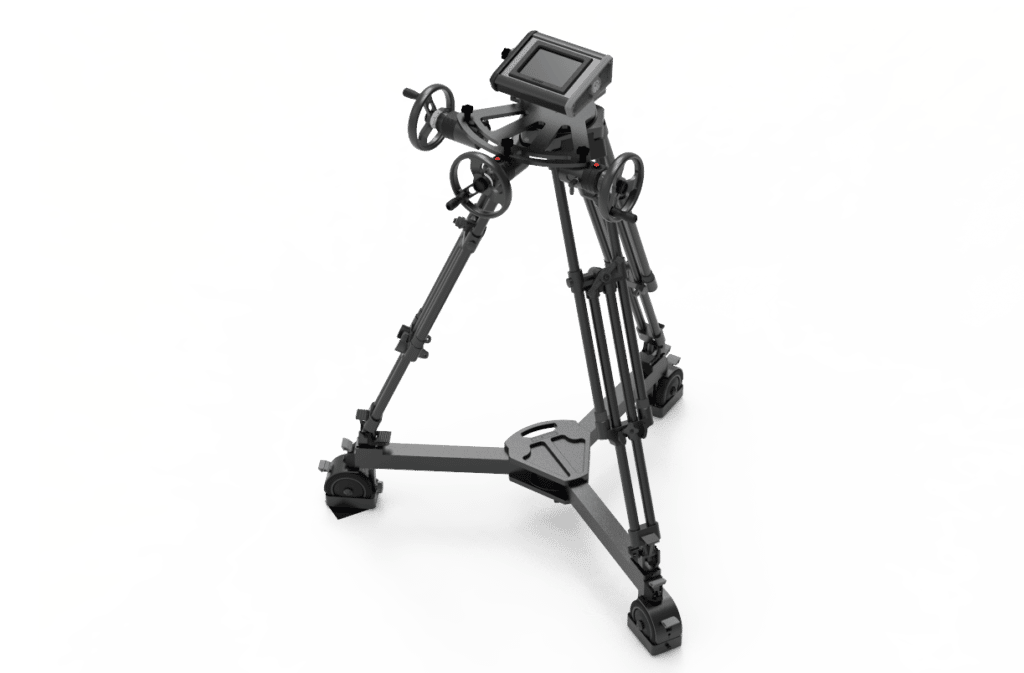
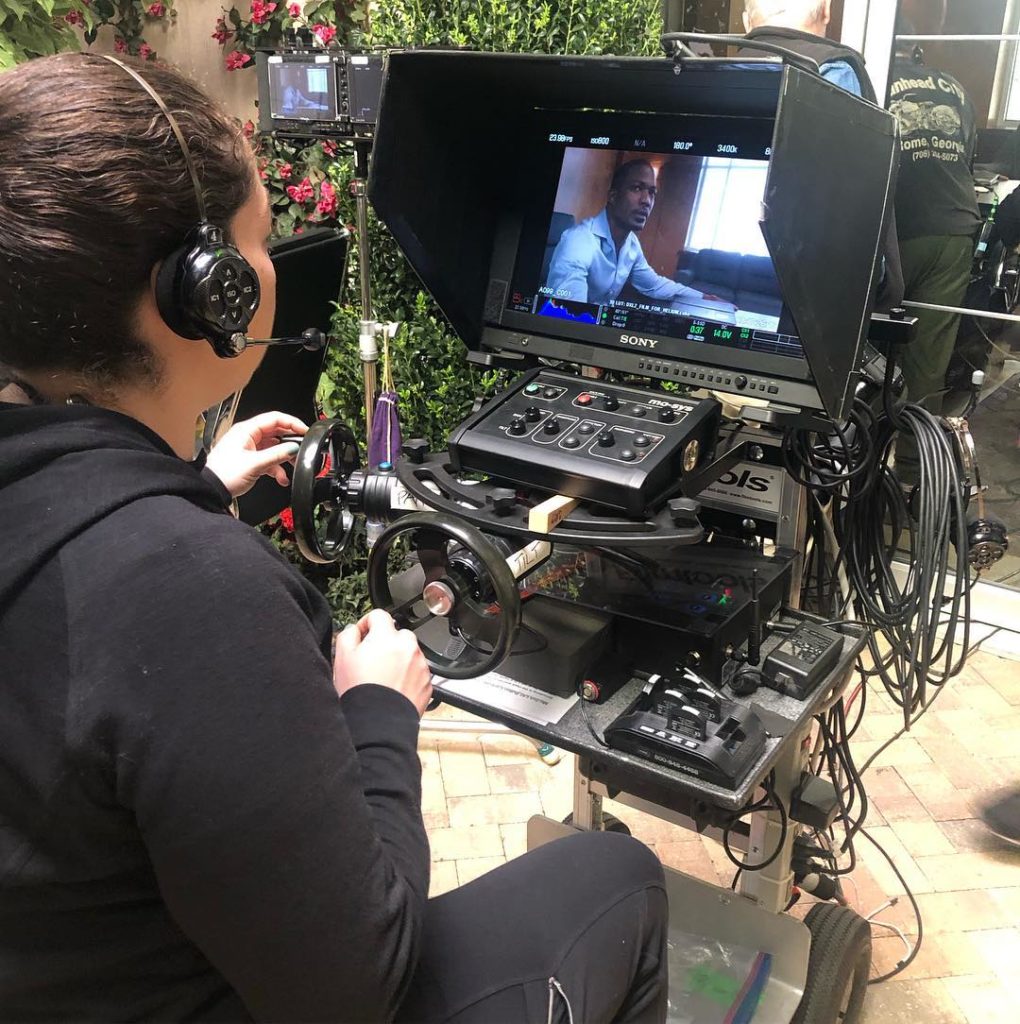
Pan bars are more common in European and Asian film markets. While not always as smooth as the handwheels used in the US, they are very precise and can make following a subject particularly easy.
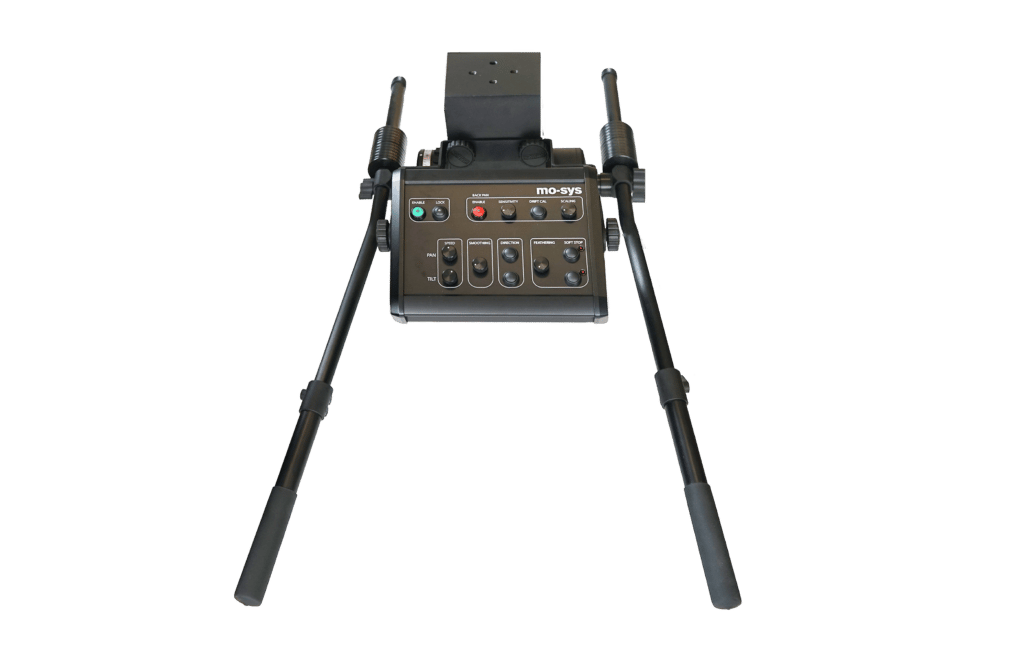
Joysticks are mostly used in broadcast rather than film. While not as smooth or as accurate as the other two options, joysticks can be more user-friendly and one joystick can often operate multiple remote heads.
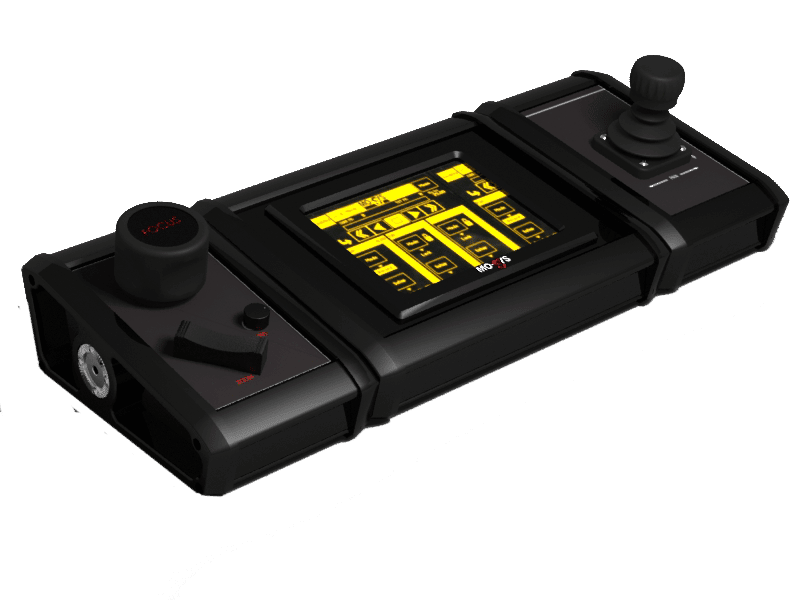 Joystick input
Joystick input
Remote Head Features
Now that we’ve outlined how remote heads work and the technology that goes into them, we’ll look into the key features that every camera crane remote head should possess. If you’re looking to acquire a remote head for your next production, you should ensure that the following key features are present.
Back-pan
Back-pan allows a camera operator to keep the remote head – and the connected camera – pointing in the same direction while the crane is moved. This does not keep the camera pointing at a specific target. Instead, it keeps the camera aimed at a set direction. Back-pan can be switched on and off and can also be used with heads attached to dollies. Mo-Sys heads such as the L40, Lambda 2.0 and B20 all have the optional back-pan feature.
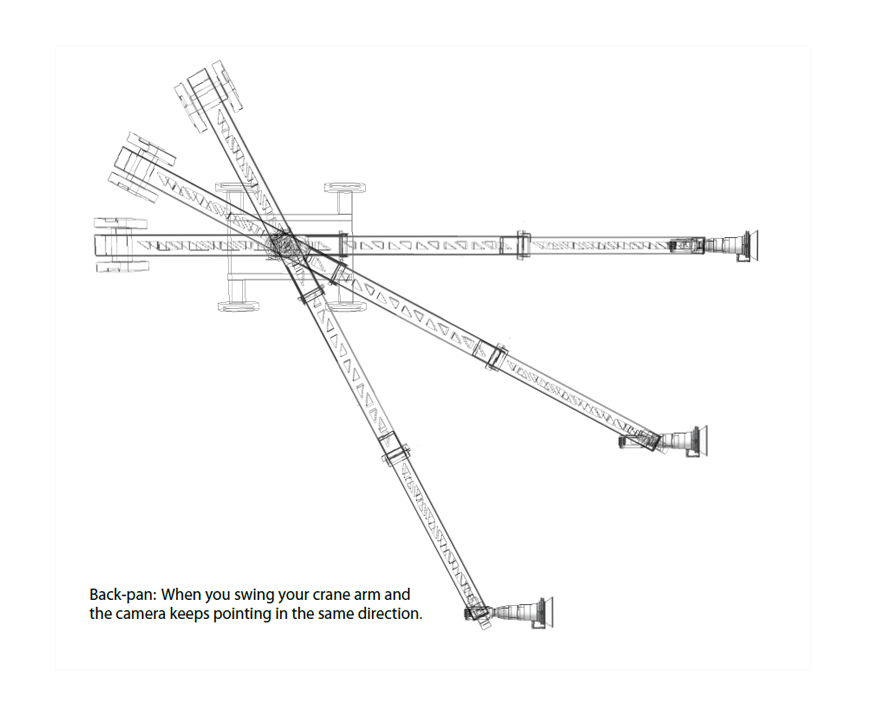
Targeting
Similar to backpan, the targeting feature available with many remote heads keeps the camera pointing at a specific spot rather than a larger direction. This makes it a useful feature if a shot needs to focus on one specific entity.
Soft stops
Soft stops can be programmed into remote heads to preset where a camera operator needs a camera to stop while a crane is being moved. Feathering can be used while setting a soft stop to determine how abruptly you want the camera to stop.
Capturing tracking data
While not currently a feature available with the majority of remote heads, with the Mo-Sys remote heads we’re proud to offer users the ability to download all of the pan/tilt data used in a shoot for use in post-production at a later date.
Roll axis
A roll axis feature will allow the remote head to rotate around the optical axis to get unique shots with a ‘Dutch Angle’. While this is not a standard feature, a roll axis can be added to all Mo-Sys remote heads.
At Mo-Sys, we have a variety of camera crane remote heads suitable for broadcast and film. Get in touch with our helpful team today to find out more.


